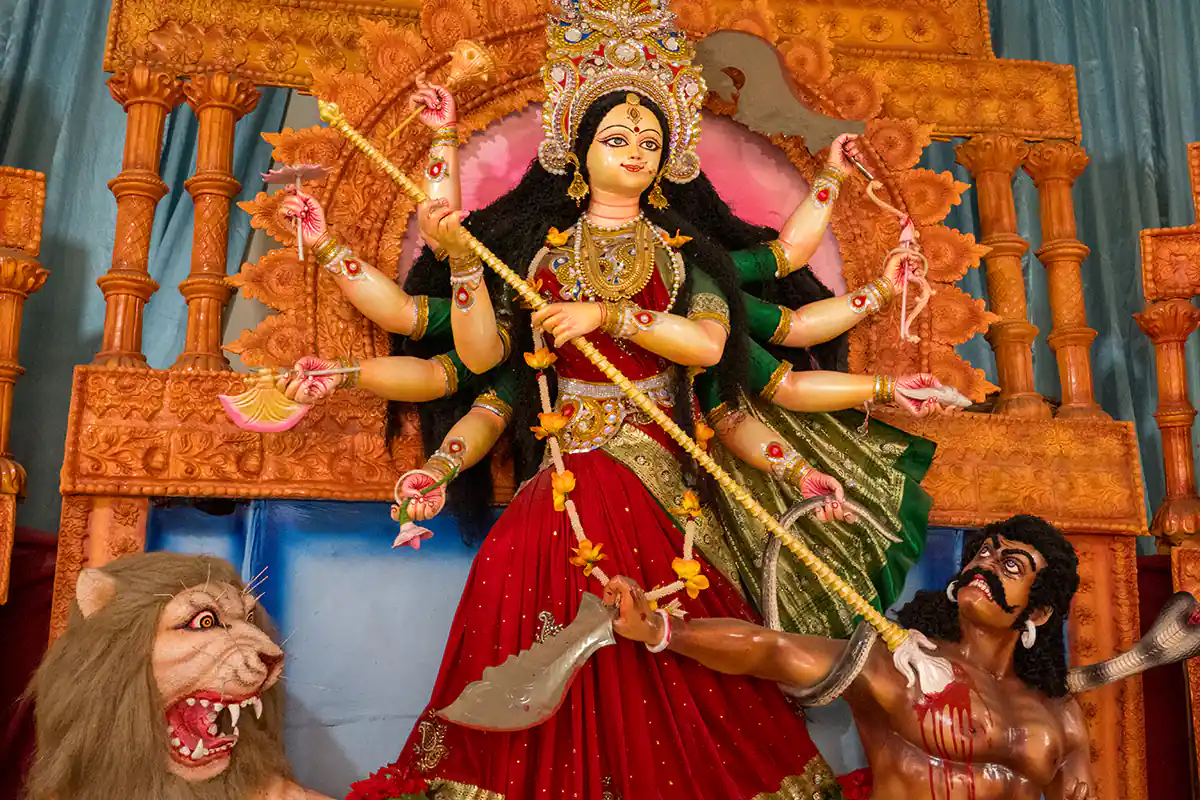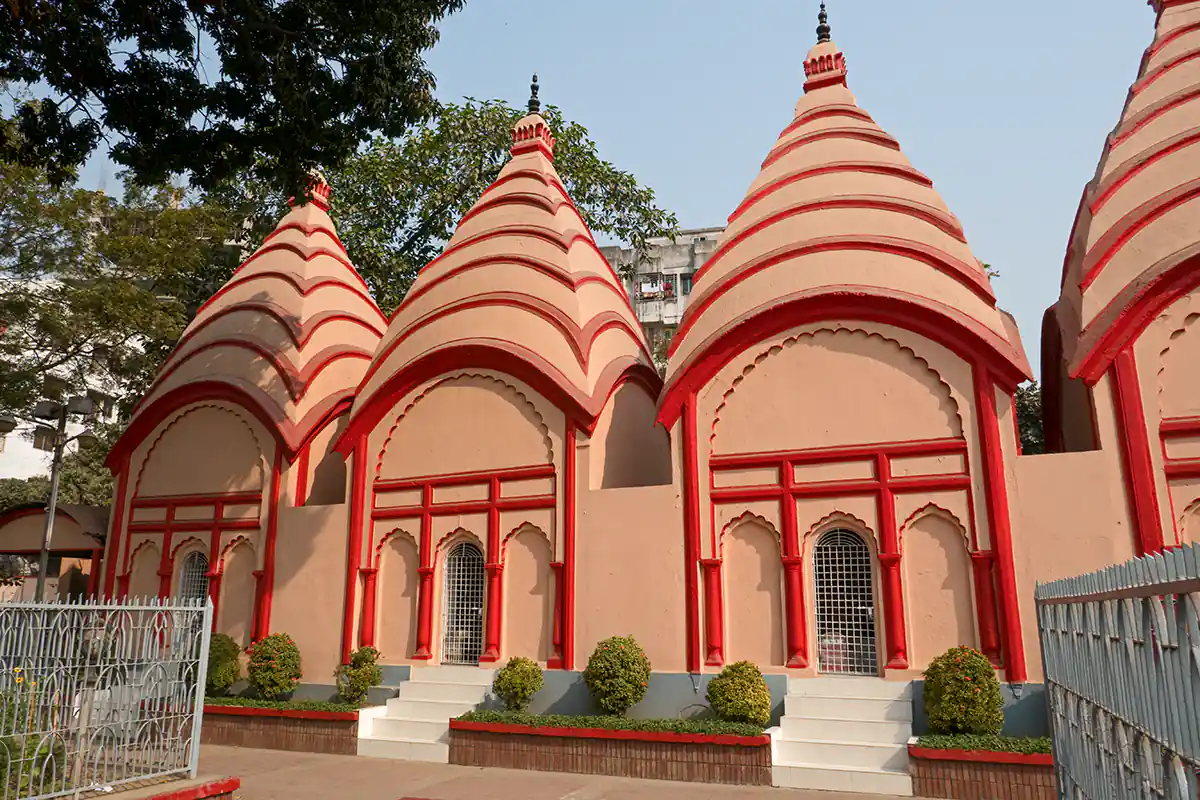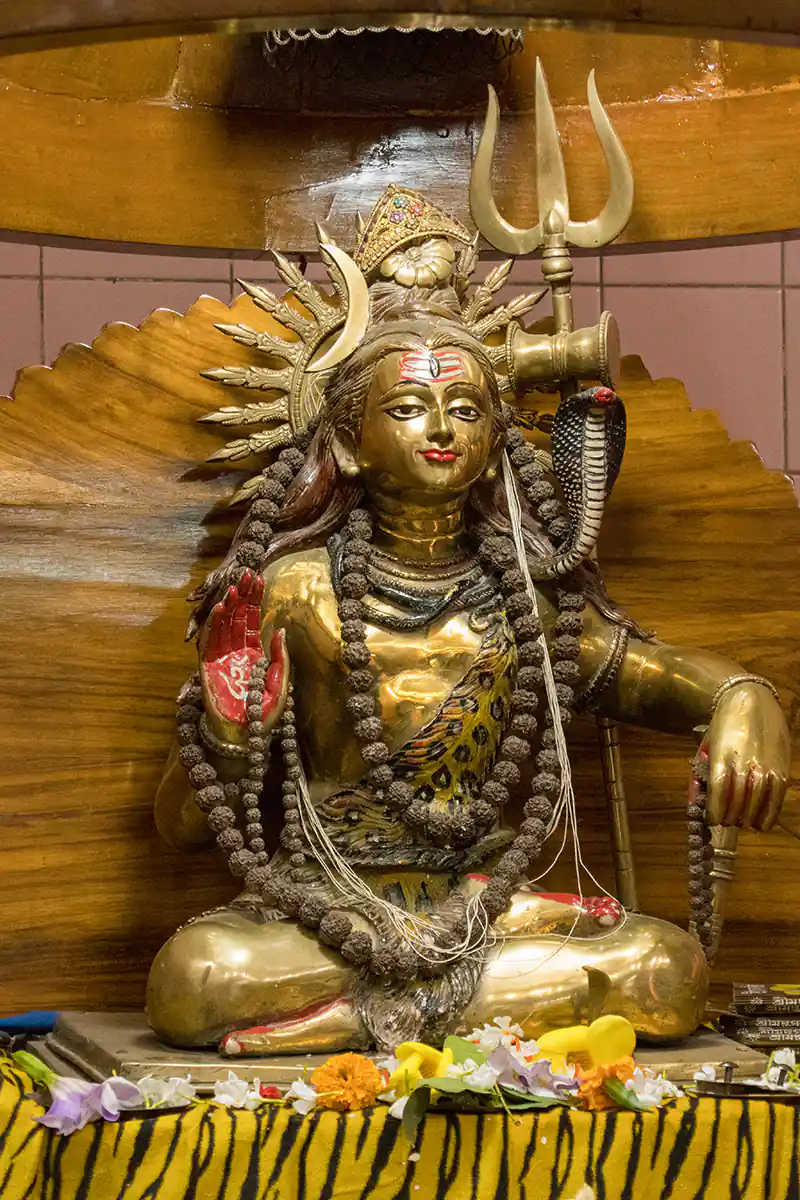Dhakeshwari Temple, Dhaka
Dhakeshwari, meaning 'Goddess of Dhaka,' is Bangladesh's primary Hindu temple. In 1966, it began to be called Dhakeshwari Jatiya Mandir, the result of a campaign by Bangladeshi Hindu groups that demanded official recognition following the declaration of Islam as the state religion in 1988. It is state-owned, giving it the distinction of being Bangladesh's National Temple.
According to legend, Dhakeshwari was built in the 12th century by King Ballal Sen of the Sena dynasty. It is said the king dreamt of a statue of the goddess Durga buried in the jungle and, after finding the statue, installed it in his temple as Dhakeshwari. However, the temple's current architectural style cannot be dated to the 12th century because of the numerous renovations, repairs, and rebuildings that have taken place over time. The present temple is two hundred years old and was built by an agent of the East India Company, though quite probably the agent merely renovated the existing temple. It is a three-roomed structure with a veranda in front and has beautiful wooden doors with carvings. In the northeastern corner of the complex are four small Shiva temples constructed in the 16th century by King Mansing. The Dhakeshwari temple is open daily, and people from all religions are welcome.
Some people consider Dhakeshwari temple to be one of the Shakti Pithas, where the jewel from the crown of the Goddess Sati had fallen. While the truth is unknown, the temple has been revered for centuries. The original 800-year-old statue of Durga was taken to Kumartuli, Kolkata in West Bengal, India, but a replica of that statue is still held in Dhakeswari.
The Dhakeshwari Temple was severely damaged during the 1971 Bangladesh Liberation War, and over half of the temple's buildings were destroyed. The main worship hall was taken over by the Pakistan Army and used as an ammunition storage area. The temple was further damaged during the Muslim mob attacks of 1989 - 92. A significant portion of the temple land has been lost due to the Vested Property Act and confiscation by the Bangladesh Government, and the current premises are considerably smaller than the historic reach of the property.
The Dhakeshwari Temple is a hub of socio-cultural as well as religious activity. Each year, the large celebration of Durga Puja (the most important event in the Bengali Hindu calendar) in Dhaka is held at the temple. Several thousand worshippers and onlookers (including Muslims) stream through the premises, where they are offered Prasad (food - usually rice and lentils). Durga Puja ends after five days, with the idols of Durga and her four children, Lakshmi, Saraswati, Kartik, and Ganesh, taken in processions from the temple for immersion in river or sea. A Bijaya Sammelani cultural program takes place in the adjoining parade ground a few days after Durga Puja is complete, and it is also a major cultural event in the Dhaka calendar, regularly attracting some of the top performers from the Dhaka music and film industry.
One of the most important events of the year is the Janmashthami procession, which starts from Dhakeshwari temple and then proceeds through the streets of Old Dhaka; this occurs on the day of Lord Krishna's birthday, which is also a public holiday in Bangladesh and second only to Durga Puja in importance in the Bengali calendar. The procession dates back to 1902 but was stopped in 1948 following the establishment of Pakistan and subsequent attacks by Muslim mobs in Dhaka. The procession was resumed in 1989.
In previous centuries, festivals also happened during the month of Chaitra in the temple complex. In India's Hindu and Tamil calendars, Chaitra is the first month of the year; in the Bengali and Nepalese calendars, it is considered the last month, and according to the Gregorian calendar, it commences in March or April.
Dhaka, formerly spelled Dacca in English, is the capital and one of the oldest cities in Bangladesh. The history of Dhaka begins with the existence of urbanized settlements in the area that is now Dhaka, dating from the 7th century CE. The Buddhist kingdom of Kamarupa ruled the city area before passing to the control of the Sena dynasty in the 9th century CE. After the Sena dynasty, Dhaka was successively ruled by the Turkic and Afghan governors descending from the Delhi Sultanate before the arrival of the Mughals in 1608. After the Mughals, the British ruled the region for over 150 years until the independence of India. In 1947, Dhaka became the East Bengal province's capital under Pakistan's dominion. Following the independence of Bangladesh in 1971, Dhaka became the new state's capital.
There are different theories regarding the origin of the name Dhaka. One is that the name came following the establishment of the Dhakeshwari Goddess temple by Raja Ballal Sea in the 12th century. Another comes from the Rajatarangini text, written by a Kashmiri Brahman named Kalhana. It says the region was originally known as Dhaka. The word Dhaka means watchtower. Bikrampur and Sonargaon - the earlier strongholds of Bengal rulers were situated nearby. So Dhaka was likely used as the watchtower for their fortifications.

Martin Gray is a cultural anthropologist, writer and photographer specializing in the study of pilgrimage traditions and sacred sites around the world. During a 40 year period he has visited more than 2000 pilgrimage places in 160 countries. The World Pilgrimage Guide at sacredsites.com is the most comprehensive source of information on this subject.



